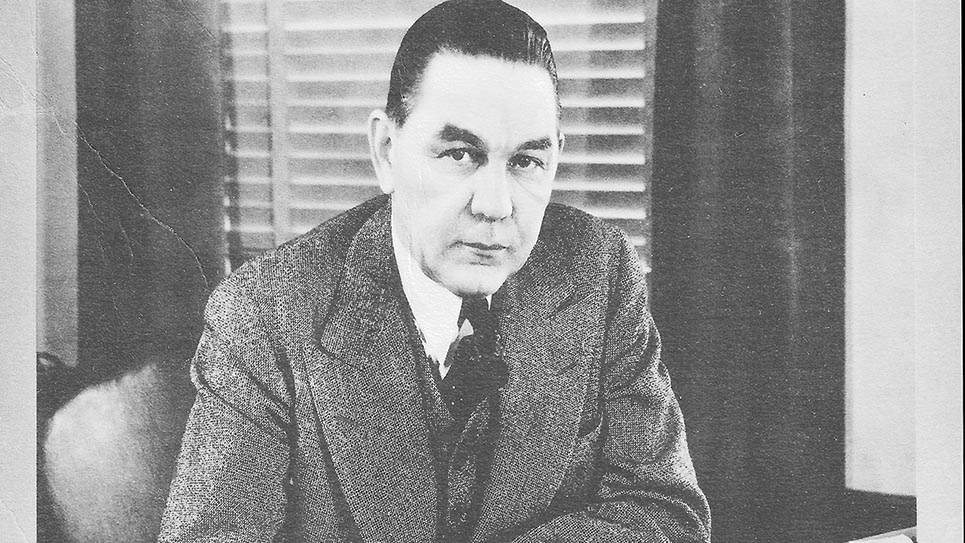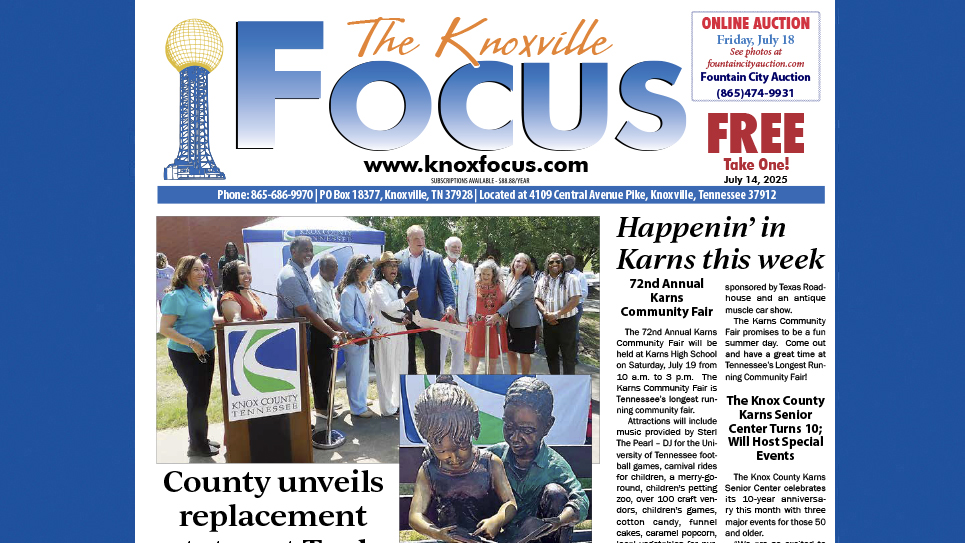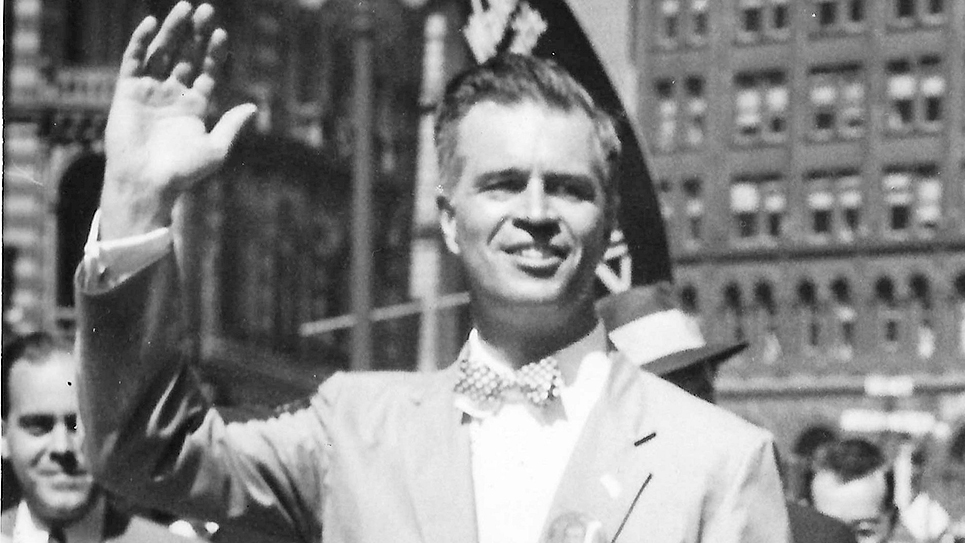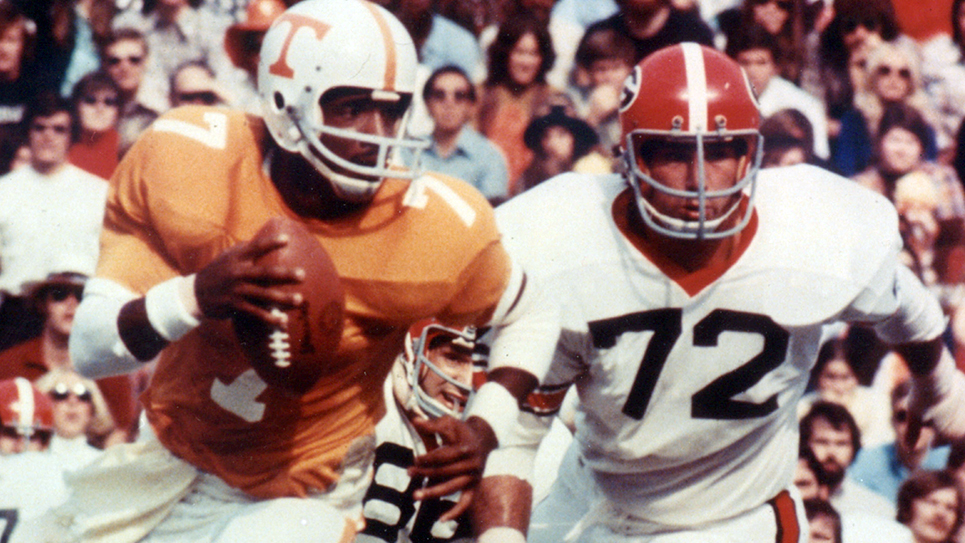John E. Miles of New Mexico
For 60 years, John E. Miles was a fixture of New Mexico’s political scene. Miles held numerous elected and appointed positions throughout his life and lived long enough to become a senior statesman of New Mexico’s Democratic Party. Throughout his political life, Miles was a strong adherent of party unity and loyalty. A man who was criticized by his enemies for being slow to act, his friends insisted he was a person who thought long and hard about what was the right course.
John Esten Miles was a native of Tennessee, having been born in Murfreesboro on July 28, 1884. Miles lived in Tennessee until he was 17 years old when he set out for Texas where he farmed for a living. Miles never finished high school and, as a result of his lack of formal education, highly prized learning. Miles married Susie Wade while living in Oklahoma, who was a member of the Choctaw Indian Nation. Eventually, John and Susie Miles settled in New Mexico. John and Susie Miles were the parents of seven children, but their union was dissolved when they divorced. A later second marriage also failed.
Miles became interested in politics and ran for public office for the first time at age 32. Defeated in his first bid for Quay County Commissioner, years later John Miles said, “If you can’t take defeat, then you shouldn’t get into politics in the first place.” Four years later Miles set his sights on the assessor’s office and won.
Governor Arthur T. Hannett appointed Miles as secretary of New Mexico’s State Tax Commission. Miles also became a newspaper publisher, owning the Las Vegas, New Mexico Independent and the New Mexico Democrat in Santa Fe.
John E. Miles became chairman of New Mexico’s Democratic Party and managed the successful campaigns of Clyde Tingley, who was elected governor in 1934 and reelected in 1936. Tingley and Miles fell out in 1937 when the governor sought to overturn the two-term limit imposed upon New Mexico’s chief executive officer. Miles was the favorite that year as Democrats contemplated their state convention to nominate a successor to Clyde Tingley. The governor called the legislature back into special session to pass a direct primary law. It was an attempt by Governor Tingley to derail Miles’ ambition to succeed him. The primary law was enacted by the legislature, but the majority was not large enough to make the law effective immediately. As expected, John Miles won the Democratic nomination for governor and beat GOP nominee Albert K. Mitchell in the general election.
Miles won a second two-year term as governor of New Mexico in 1940. John E. Miles was term-limited and went out of office in 1942. While it is unusual for a politician, especially one elected to statewide office, to run again for a lesser office, it is hardly unknown. Clyde Tingley had left the governor’s mansion and ran for his old post as chairman of the Albuquerque City Commission and served from 1940 to 1953. John E. Miles decided to run for New Mexico Commissioner of Public Lands, a statewide elected office. In fact, the race for commissioner of public lands in 1944 was a battle between two former governors as Richard C. Dillon was the Republican nominee. Dillon had served two terms as governor from 1927-1931. The race between the two former governors was close, with Miles winning by just over 4,000 votes in a year when President Franklin D. Roosevelt was carrying the state easily. The contest between the two former governors was one of the closest on the statewide ballot that year.
New Mexico’s politics had always been a bare-knuckled affair and Democrats frequently fought fierce battles inside the primary. In a state with a small population, successful candidates knew a host of people. There were also personal rivalries inside the Democratic Party in New Mexico like that of John J. Dempsey and Dennis Chavez. Dempsey, a former congressman and governor from 1943-1947, challenged Chavez in the Democratic primary for the United States Senate in 1940 and 1946.
Miles was a candidate for reelection as commissioner of public lands in 1946. Miles had near-universal name recognition in New Mexico and ran his usual frenetic campaign. 1946 was a difficult year for Democratic candidates as voters were dissatisfied with several things and tired of the deprivations induced by the Second World War. Miles eked out an even more narrow victory over his Republican opponent in the general election, winning by just over 2,000 votes.
New Mexico had become increasingly Democratic due to a heavy migration of people from Texas. Some Republicans began to grumble New Mexico was becoming part of the South.
Georgia Lusk had been the elected superintendent of schools, a statewide office, in New Mexico four times, demonstrating her popularity with New Mexicans. In 1946, Georgia Lee Lusk won a seat in the U. S. House of Representatives. 1948 dawned with intense speculation that former Governor and Commissioner of Public Lands John E. Miles was running for Congress against Mrs. Lusk. At the time, both of New Mexico’s two congressmen were nominated and elected at-large, meaning both ran statewide. The incumbent congressmen from New Mexico in 1948 were Antonio “Tony” Fernandez and Georgia Lusk. By the beginning of the year, it appeared no less than nine other Democrats coveted a seat in Congress, including former Governor John E. Miles.
Miles made his congressional bid official on April 1, 1948, when he announced he was running for the Democratic nomination. “I feel that my long experience as a public official will be valuable to the people of New Mexico in the congress,” Miles said.
“As secretary of the state tax commission, as governor, as member of the old conservation commission and as land commissioner, I have gained a broad background concerning our state,” Miles declared. At the time, Miles was the fifth person to officially announce a campaign for Congress as a Democrat.
John E. Miles ran first in the crowded Democratic primary with Congressman Antonio Fernandez more than 2,000 votes behind to claim second place. Congresswoman Georgia Lee Lusk’s brief career in the House was over when she ran third.
1948 was as good a year for Democrats as 1946 had been for Republicans and the entire ticket swept New Mexico. Once again, John Miles led the ticket in the general election as he and Fernandez soundly defeated the GOP nominees.
Miles could very likely have remained in Congress as long as he wished but instead left his seat in the House to run once again for governor. John Miles faced three other credible candidates for the Democratic nomination, including David Chavez, brother of New Mexico’s senior United States Senator Dennis Chavez. Miles won the Democratic nomination, albeit with only a plurality. David Chavez had surrendered a federal judgeship to make the run for the gubernatorial nomination and it had been a bitter campaign. Both Chavez and his brother, Senator Dennis Chavez, pledged their support of the Democratic ticket in the fall campaign, but the wounds inflicted during the primary never entirely healed.
In the general election, Miles faced Edwin L. Mechem, who would go on to become the most successful GOP candidate in the Land of Enchantment for two decades. The nephew of Merrit Mechem, who had served a term as governor of New Mexico, Ed Mechem had been an FBI agent before winning election to the New Mexico House of Representatives in 1946. Few observers gave Mechem much of a chance of winning against the veteran campaigner John Miles when the gubernatorial election began. The last Republican to be elected governor of New Mexico had been Richard Dillon in 1928.
Ed Mechem proved to be an adept and aggressive candidate with a knack for campaigning, which seemed to take Democrats, including John Miles, by surprise. Mechem lambasted the previous gubernatorial administration headed by John E. Miles as well as others. Miles snapped, “When the chips are down, it becomes apparent the Republicans have nothing to offer the people of New Mexico. The Democrats, on the other hand, do have something to offer and it is a progressive program that has proven during the past 20 years to be good for the entire state.”
Ed Mechem fired back that the principles of Thomas Jefferson and Andrew Jackson “mean nothing to the men in charge of the state machine.”
New Mexico’s Young Republicans weaponized the very words of the Democrats used during the primary campaigns in the general election. The Young Republicans turned the accusations and denunciations into radio spots. Radio ads featuring Senator Dennis Chavez or his brother David hitting John Miles proved to be very effective in the campaign. “The political manipulation of Charles Rose, state school superintendent, and John Miles make it evident that the election of Rose was a mistake and the election of John Miles would be a tragic error for our school children,” David Chavez’s voice cried in one ad. Another featured Senator Chavez saying, “I hope New Mexico’s good people will blast to perdition the political dynasty that rules New Mexico today.”
On Election Day, the two decades New Mexico’s Democratic Party had dominated the Land of Enchantment ended. Ed Mechem won a comfortable majority over John Miles. The rebuke of Miles was more personal, as the rest of the Democratic ticket won, but the defeat did reinstitute New Mexico being a two-party state.
Miles made his final bid for public office in 1956, seeking to return to the commissioner of public lands’ office. The former governor only narrowly lost the Democratic nomination, the first statewide defeat he had suffered inside the Democratic primary. It marked the end of the 71-year-old John Miles’ career as a candidate.
For the remainder of his long life, John Esten Miles continued to appear at Democratic events and assumed the status of an elder statesman. The former governor counseled prospective candidates for any number of offices with his intimate knowledge of New Mexico and her people. Miles became an invaluable resource to younger generations.
John E. Miles celebrated his 87th birthday in July of 1971 and the former governor was honored as one of the Land of Enchantment’s statesmen. Governor Bruce King issued a proclamation making it “John E. Miles Day” in New Mexico. Albuquerque television station WNME aired an hour-long program honoring the life and career of the former governor. The television program was originally intended to be a half hour, but so many friends of the former governor clamored to say a kind word about Miles that the producer had to expand it to a full hour. Just over two months later, John E. Miles died. Miles had ruefully concluded he could no longer live by himself as he had for the last two decades of his life. For a brief time, the former governor lived with one of his daughters but eventually went to live at the Four Seasons Nursing Home.
By the time he died, John Esten Miles had not only become an elder statesman but was known throughout New Mexico as “Mr. Democrat.” Funeral services for John Miles were held in the rotunda of New Mexico’s State Capitol. The former governor was eulogized by the Reverend Monroe Miles, a half-brother, as a man who didn’t even know how to quit; a man whose most prominent characteristic was his iron-clad loyalty to his friends, political party and state. Five former governors gathered to pay their last respects to John Miles, along with people of every class, for Miles had friends everywhere. The casket holding the former governor’s mortal remains was carried to its final rest by eight of John Miles’ grandsons.
The Albuquerque Journal published an editorial remembering “Johnny” Miles as one who had emerged from the darkness of political defeat to become revered as an elder statesman outside of public office and the Grand Old Man of New Mexico’s Democratic Party.
One couldn’t have a better epitaph.
© 2023 Ray Hill







